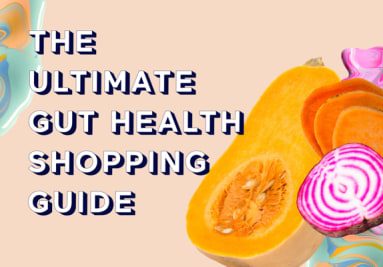When it comes to the former, experts recommend a French press or pour-over method since you can easily find vessels made completely of glass or stainless steel, an impossible task in the other forms of coffee creation. These methods also allow the most benefits regarding the latter: “The stainless-steel mesh filter on a French press and the basic open pour-over method allows the coffee’s natural oils to pass, which not only improves flavor but also preserves cancer-fighting polyphenols,” explains bestselling author Dave Asprey, who revolutionized the coffee world with his invention of Bulletproof lattes, which are spiked with fat for even more health benefits. There are other drawbacks of non-pour-over or French press methods as well. “Your beloved coffee pods and single-brew machines have the potential to be the least healthy for your body because of the pod packaging and the potential for mold growth in the machine, unless they are getting cleaned regularly and properly,” says Cole. Both coffee pods and standard drip brews contain filtration that reduces the levels of diterpenes. Instant coffee contains almost no diterpenes, as they’ve been filtered out during processing. As for the trendy cold brew coffee? “Cold brew retains more diterpenes because there are no paper filters involved,” says Vincent Pedre, M.D., mbg Collective member, gut health expert, and author of Happy Gut. “It also has lower acidity, which makes it easier on the stomach.” Different brew methods also result in different amounts of caffeine. Says Pedre, “Drip brew contains the most caffeine of any method—the longer the brew cycle, the more caffeine is released.” French press is also relatively high in caffeine, while cold brew also tends to contain less caffeine (although a longer steeping time can result in more). “Note that some coffee shops will brew stronger cups than others. If you’re not sure, consider an espresso or Americano—you’ll get about 75 mg caffeine per shot versus the 100-plus in 8 ounces of drip coffee,” says Jess Cording, R.D., mbg Collective member and founder of Jessica Cording Nutrition. While caffeine isn’t inherently good or bad, how it affects your body goes back to your genetic makeup. People with one or two slow variants may want to stick to brew methods that are lower in caffeine for a better net impact on their body. With all of that information, what’s your best bet? Most experts recommend a pour-over method (this is a great, affordable vessel option), with an unbleached filter to avoid extra chemical exposure. You eliminate most—but not all—of the diterpenes while retaining as many polyphenols as possible. If you don’t have cholesterol issues, mixing in a glass of Turkish, cold brew, or French press coffee on occasion for even more diterpenes might not be a bad idea; although if you suffer from any cardiovascular problems, that should likely be avoided. Pedre notes that “darker roasts contain less caffeine since the caffeine is typically cooked out of the bean during the roasting process.” Cording always recommends that her clients look for organic beans whenever possible, especially if they’re consuming coffee daily. “It’s one of the best ways to help reduce your exposure to pesticides.”




